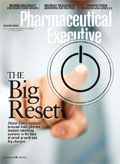War Games 2.0
Competitive simulations can help pharma adjust to market changes by identifying effective action steps.
Many pharmaceutical professionals are aware that the industry in the US and Europe has evolved into the mature or competitive stage of its life cycle. This transition explains most of the key industry changes over the last decade, including fewer new products, stagnant markets, pricing pressures, and greater brand and generics competition. But despite recognizing this new era, many professionals continue to rely on an outdated business tool, such as the traditional business war games wherein brand teams divide up to test their own marketing elements against the tactics of their competitors. In today's market, this business tool requires a complete upgrade.

Stan Bernard, MD, MBA
Live, qualitative competitive simulations are the new and improved version of business war games. These "War Games 2.0" hold several advantages for pharma professionals over the traditional version. For one, competitive simulations offer new approaches and capabilities to help fix many of the shortcomings associated with war games. For example, unlike war games, competitive simulations are specifically designed to identify action steps that help companies and products win in the market place.
Secondly, competitive simulations reflect the new era that the pharmaceutical industry has entered. While traditional war games focus primarily on physician detailing and messaging, competitive simulations take a holistic approach to competing, incorporating multiple disciplines and functions, various stakeholders, emerging market factors, and different types of competitors and competitive threats. In fact, performing old war games in the new pharmaceutical environment may actually lead to the wrong competitive and market conclusions, placing a company at competitive risk and disadvantage. The following is a list of important upgrades offered in competitive simulations.
1. Customization of the Competitive Simulation Exercise
Traditional war game vendors typically use standard frameworks and templates, and simply plug in the names of products and competitors when conducting a war game. In contrast, consultants conducting competitive simulations recognize that every product, market, and competitive landscape is unique, and therefore each simulation must be designed de novo based on the client's specific objectives. Nearly every aspect of a competitive simulation can be customized, including critical issues or topics, competitive companies and products, market assumptions and timing, key stakeholders, the number of exercises and workshop duration, and many other factors. Customization ensures that the simulation reflects the brand team's competitive reality and offers useful insights.
2. Comprehensive Approach to Winning
Competitive simulation consultants understand that companies need to take a comprehensive approach that goes beyond simply marketing and sales strategies and tactics. Consequently, competitive simulations involve multiple perspectives from within the company as well as ideas from external sources. For example, simulations may reveal competitive advantages in functions such as clinical research, manufacturing, and distribution, or in disciplines like managed care, legal, or communications.
3. Incorporation of Key Stakeholders
In the old pharmaceutical world, it made sense for war games to include role-playing or actual physicians as the decision makers. However, competitive simulations reflect the new reality, incorporating multiple stakeholders as influencers and decision makers. For example, a typical global simulation may have either internal corporate professionals or external stakeholders playing the roles of managed care or government payers, an FDA regulator, a professional medical society representative, a patient, a key opinion leader, or other roles. The inclusion of these stakeholders enhances real-world perspectives, insights, and, ultimately, the simulation results.
4. Specific Action Steps
The biggest complaint following most war games is the lack of follow-up. In contrast, competitive simulations are specifically designed to identify implementable action steps to help clients go to market. And competitive simulations are often integrated directly into a company's brand planning process.
5. Senior Executive Participation
Unlike war games, senior executives participate in competitive simulations for the benefit of both the simulation and the executive. Typically playing the role of judges, executives provide necessary sponsorship, guidance, and marching orders. Participating throughout a one- to two-day exercise, executives gain a greater understanding of the brand team's market, competitors, and issues. This experience enables executives to drive key action steps following the simulation.
6. Engaging Themes
Unlike the basic battle themes of war games, competitive simulations use entertaining themes such as a sporting event, a popular movie, or a reality show that reflects the feeling of the brand team's actual market competition. The more engaged the participants, the more productive the exercise.
7. Applications Beyond Products
Competitive simulations can be used not just for single brands but also for franchises, portfolios, and companies—an important application because today pharma competes on all of these levels. For example, oncology products often have multiple indications across different types of cancer and are typically used in combination regimens. Therefore, it makes sense to conduct oncology franchise simulations. Similarly, companies with large portfolios of products such as cardiovasculars or vaccines should consider conducting portfolio simulations.
8. Greater Frequency
Traditionally, war games were conducted during the launch of a company's or competitor's product. Pharma companies now recognize that brand teams need to practice—just like sports teams and music groups—much more often to be at the top of their game. In fact, there are pharmaceutical companies that conduct competitive simulations every quarter for their major products. Appropriate times for competitive simulations include the annual marketing or brand planning process; a company's or a competitor's new product launch; new data, labeling, or indications; when exploring a new strategy or product repositioning; a competitors' transformation of their strategy or tactics; and significant changes in customers, stakeholders, or other market factors.
Competitive simulations are more realistic, customized, engaging, and productive than traditional war games. By delivering specific competitive insights and action steps, simulations have been shown to dramatically enhance success in the real world.
Stan Bernard, MD, MBA is President of Bernard Associates, LLC, a pharmaceutical industry management consulting firm. He can be reached at SBernardMD@BernardAssociatesLLC.com
The Misinformation Maze: Navigating Public Health in the Digital Age
March 11th 2025Jennifer Butler, chief commercial officer of Pleio, discusses misinformation's threat to public health, where patients are turning for trustworthy health information, the industry's pivot to peer-to-patient strategies to educate patients, and more.
Navigating Distrust: Pharma in the Age of Social Media
February 18th 2025Ian Baer, Founder and CEO of Sooth, discusses how the growing distrust in social media will impact industry marketing strategies and the relationships between pharmaceutical companies and the patients they aim to serve. He also explains dark social, how to combat misinformation, closing the trust gap, and more.
